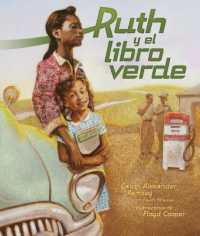- ホーム
- > 洋書
- > 英文書
- > History / World
Full Description
Many of the earliest Africans to arrive in the Americas came to Central America with Spanish colonists in the sixteenth and seventeenth centuries, and people of African descent constituted the majority of nonindigenous populations in the region long thereafter. Yet in the development of national identities and historical consciousness, Central American nations have often countenanced widespread practices of social, political, and regional exclusion of blacks. The postcolonial development of mestizo or mixed-race ideologies of national identity have systematically downplayed African ancestry and social and political involvement in favor of Spanish and Indian heritage and contributions. In addition, a powerful sense of place and belonging has led many peoples of African descent in Central America to identify themselves as something other than African American, reinforcing the tendency of local and foreign scholars to see Central America as peripheral to the African diaspora in the Americas. The essays in this collection begin to recover the forgotten and downplayed histories of blacks in Central America, demonstrating the centrality of African Americans to the region's history from the earliest colonial times to the present. They reveal how modern nationalist attempts to define mixed-race majorities as "Indo-Hispanic," or as anything but African American, clash with the historical record of the first region of the Americas in which African Americans not only gained the right to vote but repeatedly held high office, including the presidency, following independence from Spain in 1821.Contributors. Rina CÁceres GÓmez, Lowell Gudmundson, Ronald Harpelle, Juliet Hooker, Catherine Komisaruk, Russell Lohse, Paul Lokken, Mauricio MelÉndez Obando, Karl H. Offen, Lara Putnam, Justin Wolfe
Contents
Acknowledgments vii
Introduction / Lowell Gudmundson and Justin Wolfe 1
Part I. Colonial Worlds of Slavery and Freedom
Angolans in AmatitlÁn: Sugar, African Immigrants, and Gente Ladina in Colonial Guatemala / Paul Lokken 27
Cacao and Slavery in Matina, Costa Rica, 1650-1750 / Russell Lohse 57
Race and Place in Colonial Mosquitia, 1600-1787 / Karl H. Offen 92
Slavery and Social Differentiation: Slave Wages in Omoa / Rina CÁceres GÓmez 130
Becoming Free, Becoming Ladino: Slave Emancipation and Mestizaje in Colonial Guatemala / Catherine Komisaruk 150
Part II. Nation Building and Reinscribing Race
"The Cruel Whip": Race and Place in Nineteenth-Century Nicaragua / Justin Wolfe 177
What Difference did Color Make? Blacks in the "White Towns" of Western Nicaragua in the 1880s / Lowell Gudmundson 209
Race and the Space of Citizenship: The Mosquito Coast and the Place of Blackness and Indigeneity in Nicaragua / Juliet Hooker 246
Eventually Alien: The Multigenerational Saga of British Western Indians in Central America, 1870-1940 / Lara Putnam 278
White Zones: American Enclave Communities of Central America / Ronald Harpelle 307
The Slow Ascent of the Marginalized: Afro-Descendents in Costa Rica and Nicaragua / Mauricio MelÉndez Obando 334
Bibliography 353
Contributors 385
Index 389








